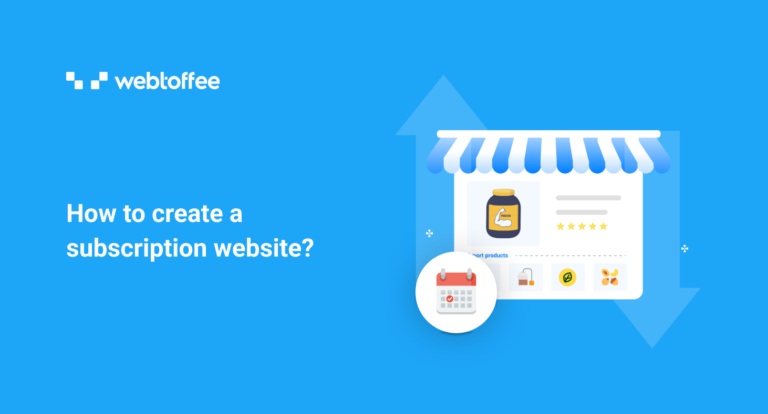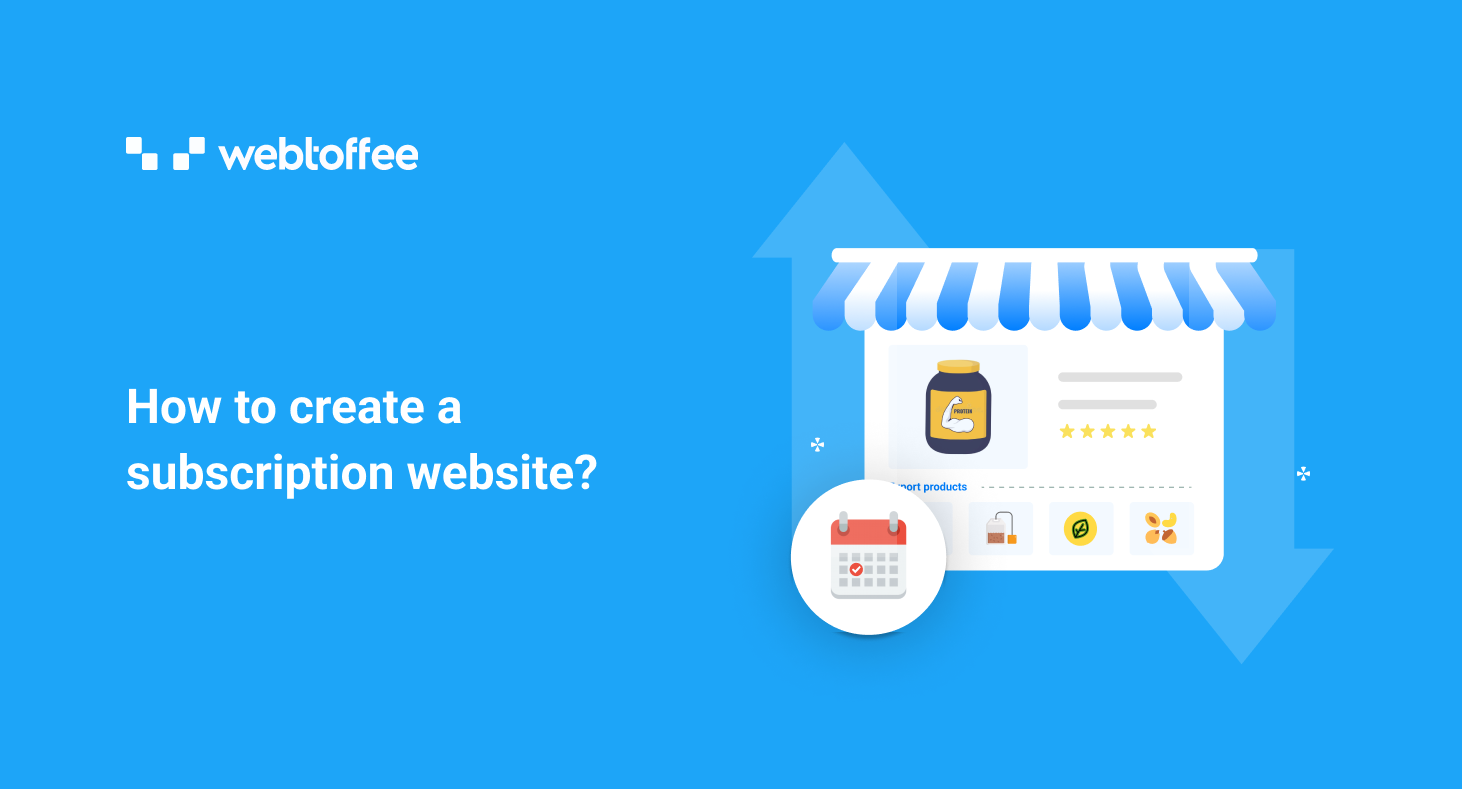Creating a subscription website can boost your business. It offers recurring revenue and a loyal customer base.
A subscription website is a platform where users pay regularly for access to content or services. These sites can include anything from streaming services to educational platforms. They offer creators and businesses a steady income and a way to build a dedicated community.
If you want to create one, you need the right tools and strategies. This guide will help you understand the essentials. From selecting a niche to choosing the best software, we cover the basics. Starting a subscription site can seem complex, but breaking it down makes it manageable. Let’s dive into the steps to get you started.
Introduction To Subscription Websites
Subscription websites are gaining popularity in the digital world. They offer recurring services, content, or products to users. This model provides consistent revenue and loyal customers. Let’s explore the basics of subscription websites.
What Is A Subscription Website?
A subscription website provides content or services for a recurring fee. Users pay monthly, yearly, or at other intervals. These websites include various industries such as entertainment, education, and software.
Examples include:
- Streaming services like Netflix
- Online learning platforms like Coursera
- Software services like Adobe Creative Cloud
Subscription websites build a stable income. This model keeps customers engaged and loyal.
Benefits Of Subscription Models
Subscription models offer numerous benefits. Here are some key advantages:
| Benefit | Description |
|---|---|
| Stable Revenue | Provides consistent income through recurring payments. |
| Customer Loyalty | Encourages long-term user engagement. |
| Scalability | Easily scale services as the user base grows. |
| Personalization | Offers tailored content or services to users. |
These benefits make subscription models attractive. They provide a win-win for both businesses and users.
Planning Your Subscription Website
Creating a subscription website involves several key steps. Planning is crucial to ensure your website serves your target audience effectively. During the planning phase, you’ll identify your niche and define your target audience.
Identifying Your Niche
First, decide what your subscription website will offer. Focus on a specific area. This could be anything from fitness tips to cooking tutorials. Research to see what topics are popular. Look for gaps in the market. Find a niche where you can provide value. Your niche should align with your interests and expertise.
Defining Your Target Audience
Next, define who will use your website. Think about their age, gender, and location. Consider their interests and needs. Create a profile of your ideal subscriber. This helps tailor your content to their preferences. Knowing your audience makes it easier to attract and retain subscribers.
Choosing The Right Platform
Creating a subscription website starts with choosing the right platform. This choice impacts your site’s performance, user experience, and growth potential. To help you make an informed decision, let’s explore some popular platforms and key factors to consider.
Popular Platforms Overview
Several platforms are widely used for subscription websites. Here’s an overview of some popular choices:
| Platform | Key Features |
|---|---|
| WordPress | Highly customizable, numerous plugins, user-friendly |
| Wix | Drag-and-drop builder, easy to use, good for beginners |
| Squarespace | Beautiful templates, all-in-one platform, excellent support |
| Shopify | Great for e-commerce, scalable, many integrations |
Factors To Consider
Several factors should guide your choice of platform. Consider the following:
- Ease of Use: Choose a platform that matches your technical skills.
- Cost: Compare the pricing plans and features offered.
- Customization: Ensure the platform allows for design and functionality tweaks.
- Scalability: Pick a platform that can grow with your business.
- Support: Check the availability of customer support and resources.
Let’s break down these factors further:
- Ease of Use: If you are new to website creation, look for platforms with intuitive interfaces.
- Cost: Some platforms charge monthly fees, while others have one-time costs. Choose based on your budget.
- Customization: Think about how much you want to personalize your site. Some platforms offer more flexibility.
- Scalability: As your subscription base grows, your platform should handle increased traffic and transactions.
- Support: Reliable support can save you time and frustration. Look for platforms with robust help resources.
Choosing the right platform sets the foundation for your subscription website’s success. Assess your needs and weigh the options carefully.

Credit: www.cozmoslabs.com
Designing Your Website
Designing your website is a crucial step in creating a subscription site. Your website must be visually appealing and easy to navigate. A well-designed site can attract and retain subscribers. Let’s break down some essential aspects of website design.
User-friendly Layout
A user-friendly layout is key to a successful subscription website. Keep your design clean and organized. Use clear headings and subheadings to guide users. Make sure important information is easy to find. Avoid cluttering your pages with too much text or too many images. Simple navigation menus help users find what they need quickly.
Consider using a grid layout for consistency. This helps create a balanced and professional look. Ensure your call-to-action buttons are prominent. They should stand out and be easy to click. A good layout improves user experience and increases conversions.
Responsive Design Tips
Responsive design is essential for modern websites. Your site must look good on all devices. This includes desktops, tablets, and smartphones. Start by using a responsive template or theme. These are designed to adjust to different screen sizes automatically.
Test your website on multiple devices. Check that images and text are not distorted. Ensure buttons and links are easy to tap on touchscreens. Use flexible images and media queries to control the layout. A responsive design ensures all users have a positive experience. This can lead to more subscribers and better engagement.
Setting Up Subscription Plans
Creating a subscription website requires careful planning. One of the key elements is setting up subscription plans. This step can affect your revenue and customer satisfaction. It is important to get this right from the start.
Pricing Strategies
Your pricing strategy determines how much you charge for your subscription plans. First, research your market. Understand what your competitors charge. This helps you set a competitive price. Consider offering a free trial. This can attract more users. Ensure your prices reflect the value you provide. Do not undercharge or overcharge.
Creating Subscription Tiers
Subscription tiers offer different levels of service. This approach caters to different customer needs. Start with a basic tier. This should have the essential features. Next, create a standard tier. Offer more features than the basic tier. Finally, have a premium tier. This should offer all features and benefits.
Each tier should provide clear value. Ensure customers understand what they get. Highlight the benefits of upgrading. This encourages users to choose higher tiers. Keep your tiers simple. Too many options can confuse users. Focus on quality over quantity.
Integrating Payment Systems
Integrating payment systems is a crucial step in creating a subscription website. It ensures a seamless experience for your users. Without a reliable payment system, users may abandon their subscriptions. This section will guide you through the essential aspects of integrating payment systems.
Payment Gateway Options
Choosing the right payment gateway is vital for your subscription website. Popular options include PayPal, Stripe, and Square. Each gateway has its unique features. PayPal is known for its widespread use and ease of integration. Stripe offers extensive customization options. Square is praised for its simplicity and low fees.
Evaluate the fees and features of each gateway. Consider user preferences and your business needs. Ensure the gateway supports recurring payments. This is essential for subscription-based services. Also, check if the gateway integrates easily with your website platform.
Ensuring Security And Compliance
Security is paramount when handling user payment information. Ensure your payment system complies with PCI-DSS standards. These standards protect cardholder data. Your users must trust that their information is secure.
Use HTTPS to encrypt data transmitted between users and your website. Regularly update your software and plugins. This helps protect against vulnerabilities. Implement strong authentication measures. Two-factor authentication can add an extra layer of security.
Stay informed about the latest security practices. Educate your team about security protocols. Protecting user data should be a top priority. Compliance with regulations ensures the credibility of your subscription website.
Creating Engaging Content
Creating engaging content is crucial for the success of your subscription website. Your content should keep subscribers coming back for more. This requires a blend of creativity and strategy. You must know what your audience wants. Then, deliver it in a way that captivates them. Let’s dive into some key areas.
Content Ideas
Content ideas are the foundation of your website. Think about what your audience loves. Create topics that spark their interest. Tutorials, how-to guides, and industry news are good starting points. Interviews with experts can add value. Also, consider user-generated content. Encourage your audience to contribute. This can build a sense of community.
Content Scheduling
Content scheduling ensures consistency. A content calendar helps you stay organized. Plan your posts weekly or monthly. This keeps your audience engaged. Consistent posting builds trust. Use tools like Google Calendar or Trello. These can help streamline your process. Schedule posts during peak times. This maximizes reach and engagement.

Credit: www.wpzoom.com
Marketing Your Subscription Website
Marketing your subscription website effectively can drive traffic and convert visitors into loyal subscribers. A solid marketing strategy ensures your website reaches the right audience and stands out in a crowded market. Let’s explore some key tactics.
Seo Strategies
SEO, or search engine optimization, is crucial for visibility. Start by researching keywords related to your content. Use tools like Google Keyword Planner. Include these keywords in your titles, headings, and content.
Optimize your website speed. Fast-loading pages rank higher. Ensure your website is mobile-friendly. Many users browse on their phones.
Build backlinks. Reach out to related blogs and websites. Ask them to link to your content. Quality backlinks improve your ranking.
Social Media Promotion
Social media can drive significant traffic. Share your content on platforms like Facebook, Twitter, and Instagram. Use eye-catching images and engaging captions.
Engage with your audience. Respond to comments and messages. Build a community around your brand.
Collaborate with influencers. They can promote your website to their followers. Choose influencers whose audience matches your target market.
Run social media ads. They can reach a wider audience. Target your ads based on demographics, interests, and behaviors.
Analyzing And Optimizing Performance
Creating a subscription website is just the beginning. To keep users engaged and satisfied, it’s crucial to analyze and optimize your website’s performance. This ensures that your site functions well and meets users’ needs. Let’s explore how to track key metrics and improve user experience.
Tracking Key Metrics
Tracking key metrics is essential for understanding how your subscription website is performing. It helps identify areas that need improvement and opportunities for growth.
- Conversion Rate: Measure how many visitors become subscribers. This tells you if your marketing efforts are working.
- Churn Rate: Track the percentage of subscribers who cancel. A high churn rate indicates problems with your service or content.
- Average Revenue Per User (ARPU): Calculate the average income from each subscriber. This helps in setting realistic financial goals.
- Customer Lifetime Value (CLV): Estimate the total revenue from a subscriber over their entire membership. This metric helps in planning long-term strategies.
Use tools like Google Analytics and subscription management software to track these metrics. These tools provide valuable insights into user behavior and website performance.
Improving User Experience
A great user experience keeps subscribers happy and reduces the churn rate. Here are some tips to enhance user experience:
- Intuitive Navigation: Ensure your website is easy to navigate. Users should find what they need quickly.
- Responsive Design: Make your site mobile-friendly. Many users access websites through their phones.
- Loading Speed: Optimize your website to load fast. Slow sites frustrate users and increase bounce rates.
- Personalization: Customize content for each user. Personalized experiences keep subscribers engaged.
- Support and Feedback: Provide excellent customer support. Encourage feedback to understand users’ needs and improve services.
Regularly test your website’s performance using tools like Google PageSpeed Insights and mobile-friendly tests. These tools help identify and fix issues that affect user experience.

Credit: www.webtoffee.com
Frequently Asked Questions
What Is A Subscription Website?
A subscription website is a platform where users pay recurring fees for access to exclusive content, products, or services.
How Do I Start A Subscription Website?
To start a subscription website, choose a niche, create valuable content, and select a reliable subscription platform.
What Platform Should I Use For Subscriptions?
Popular platforms for subscription websites include WordPress with MemberPress, Substack, Patreon, and Kajabi.
How Do I Attract Subscribers To My Site?
Attract subscribers by offering valuable content, providing free trials, and using effective marketing strategies like social media and email marketing.
Conclusion
Creating a subscription website can be simple and rewarding. Start with clear goals. Choose the right platform. Design user-friendly pages. Offer valuable content. Use secure payment methods. Promote your site through social media and email. Engage with your audience regularly.
Keep improving based on feedback. Consistency and quality matter. Follow these steps to build a successful subscription website. Your dedication will pay off. Happy building!

